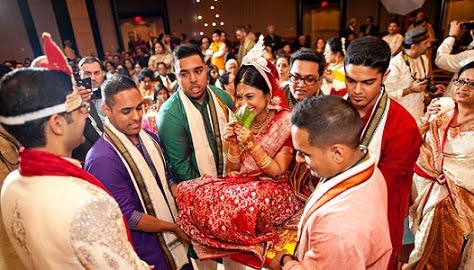Bengali weddings have colours have flavours of their own kind. Each tradition follows a tale traced from the ancient past. Bengali weddings are often loud, full of drama, splendour and their cuisines are spicy, and their traditional dresses are bright coloured, flashy and gaudy. Bengalis are much conserved about their wedding rituals and follow them very closely and religiously.Their wedding rituals are unique, some of them are common but have different names, and some are unique like never seen before.
Pre wedding rituals
Adan pradan
This ritual involves both the families getting together, going to a priest or pundit to fix the date for marriage. It is mostly done according to astronomy on an auspicious day. Sweets and gifts are exchanged as a part of ‘shagun’.
Aashirvad
This is the formal meeting of the bride with the groom’s family and the groom with bride’s. Husked rice and trefoil leaves are put on their heads to bless them and gold ornaments are presented as a token of love.
Ai Budo Bhaat
This is the Bengali version of a ‘bachelor’s party’, just a day before the wedding day. Friends and family assemble and savour traditional Bengali cuisines.
Dodhi mangal (Adhibas)
This ritual is held on the early morning of wedding day. Close family and relatives, along with the would-be couple visit Ganga to bring a pail of the holy water, which is to be used during the snan ritual. Sweet dishes, along with curd, rice flakes, and banana are fed to the bride and groom at their respective houses.
Nandi mukh
This is a puja, performed to pay homage to the ancestors of respective families and to ask for their blessings.
Tattva, gae holud and snan
Numerous gifts are sent from both the families for bride and groom, including clothes, oil, sweets, etc. These gifts are called ‘Tattva’. “Gae Hollud’is the haldi ceremony. Turmeric paste is applied to the body of bride and groom, and then follows the ‘Snan’. They bathe them using the holy water brought a day earlier.
Sankha and Pola
The white and read bangles worn by the bride are called Sankha and Pola respectively.
Wedding rituals
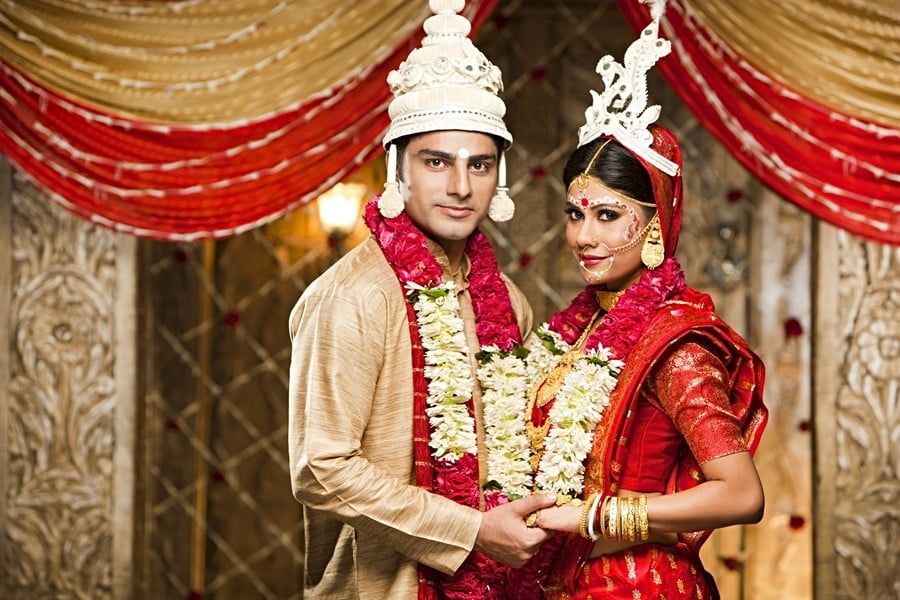
Bor Jatri and Bor Baran
The wedding procession led by the groom, the‘baarat’ is called Bor Jatri, and upon reaching the venue, the bride’s mother does Tilak and aarti of the groom. This is called Baran Dala.
Saat Paak and Subho Drishti
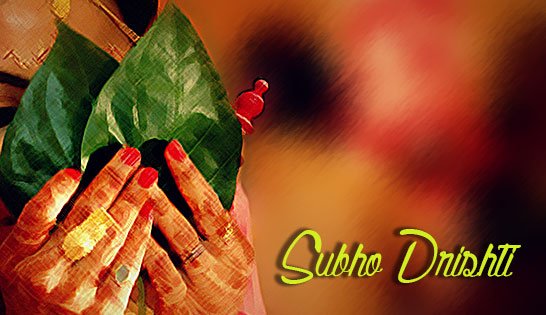
The bride covers her eyes with a pair of betel leaves, this is called Saat Paak. Then, when she removes them, in front of all the elders, and her eyes meet those of the groom, amidst all the ululation, it is known as Subho Drishti.
Mala Badal
This is the Bengali word for the exchanging of garlands.
Sampradan
The tying of bride and groom’s hands with a sacred thread.
Sindoor Daan and Ghomta
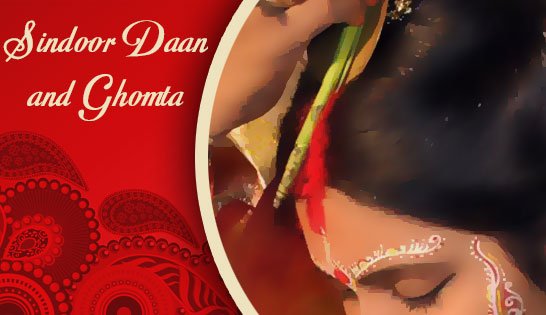
The groom puts vermillion on bride’s forehead and covers her head in a new saree. The wedding rituals end with this.
Post wedding rituals
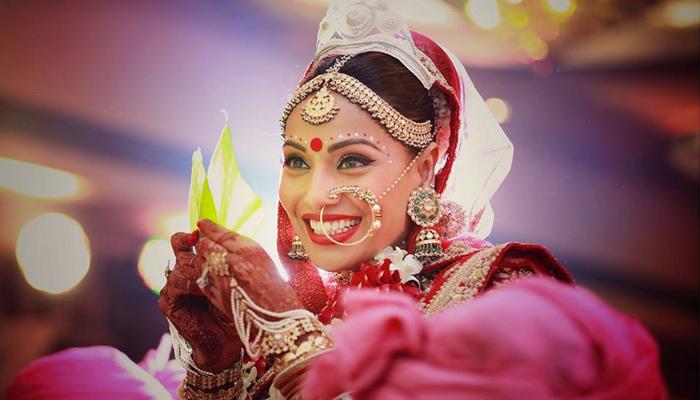
Basar Ghar
Post wedding get-together of the cousins and relatives to meet and greet the bride.
Bashi Biye
It is a puja performed by the groom’s family the next morning after the wedding, followed by Lunch.
Bou Bhaat and Reception
Bou Bhaat refers to the first meal cooked by the bride for her new family. A grand reception is held later in the evening by the groom’s family to honour and welcome the new wife.
SubhoChandi Satyanarayan Pujo
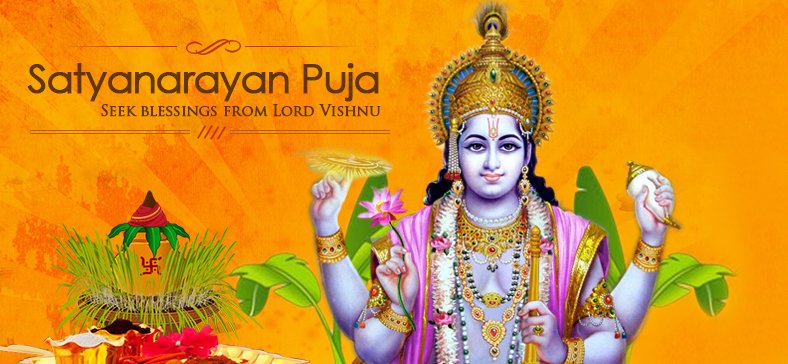
Satyanarayan Puja held for the well-being of the newlywed couple.
Oshto Mangala
The couple arrives at the wife’s maternal place for a lunch.

